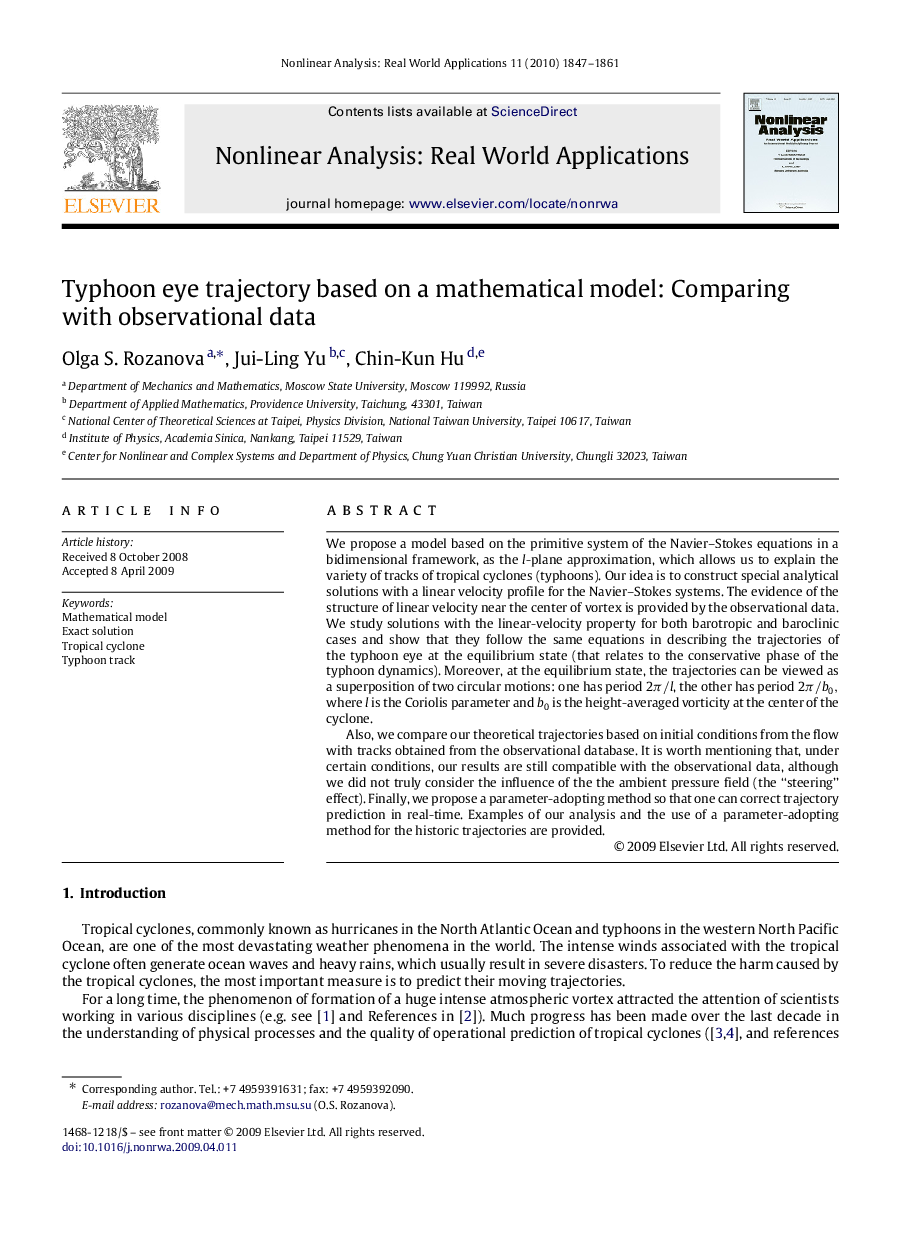| Article ID | Journal | Published Year | Pages | File Type |
|---|---|---|---|---|
| 838633 | Nonlinear Analysis: Real World Applications | 2010 | 15 Pages |
We propose a model based on the primitive system of the Navier–Stokes equations in a bidimensional framework, as the ll-plane approximation, which allows us to explain the variety of tracks of tropical cyclones (typhoons). Our idea is to construct special analytical solutions with a linear velocity profile for the Navier–Stokes systems. The evidence of the structure of linear velocity near the center of vortex is provided by the observational data. We study solutions with the linear-velocity property for both barotropic and baroclinic cases and show that they follow the same equations in describing the trajectories of the typhoon eye at the equilibrium state (that relates to the conservative phase of the typhoon dynamics). Moreover, at the equilibrium state, the trajectories can be viewed as a superposition of two circular motions: one has period 2π/l2π/l, the other has period 2π/b02π/b0, where ll is the Coriolis parameter and b0b0 is the height-averaged vorticity at the center of the cyclone.Also, we compare our theoretical trajectories based on initial conditions from the flow with tracks obtained from the observational database. It is worth mentioning that, under certain conditions, our results are still compatible with the observational data, although we did not truly consider the influence of the the ambient pressure field (the “steering” effect). Finally, we propose a parameter-adopting method so that one can correct trajectory prediction in real-time. Examples of our analysis and the use of a parameter-adopting method for the historic trajectories are provided.
